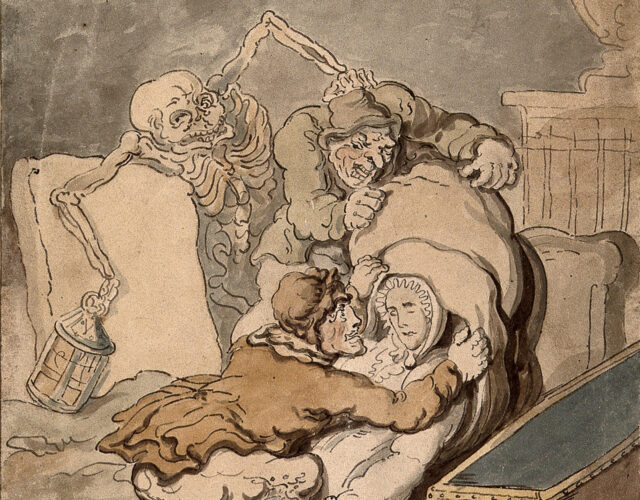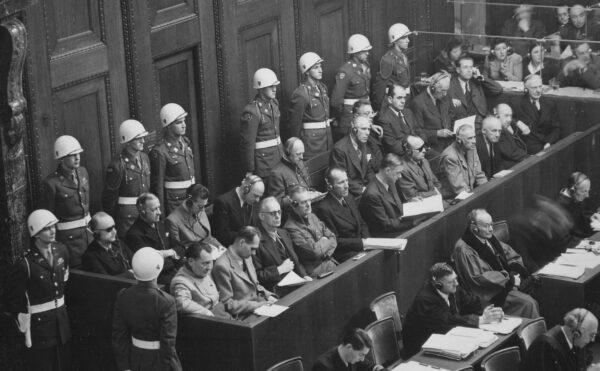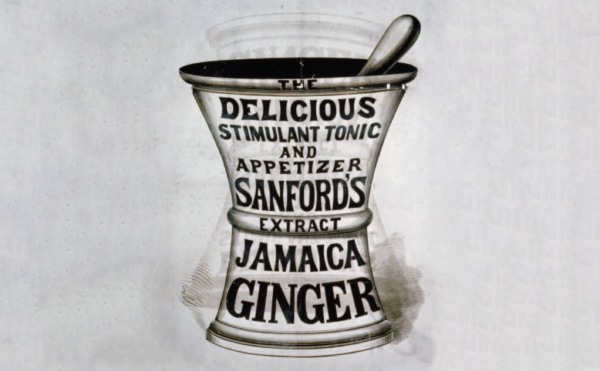Given the shortage of bodies for dissection in the 1700s, British anatomists—and their counterparts in North America—felt they had no choice but to rob graves. This episode of The Disappearing Spoon follows John Hunter, a doctor who was as revered for his discoveries as he was reviled for his methods, and one case in particular—when he stole the body of an Irish giant—that has made his name ring with infamy down to the present day.
About The Disappearing Spoon
The Science History Institute has teamed up with New York Times best-selling author Sam Kean to bring a second history of science podcast to our listeners. The Disappearing Spoon tells little-known stories from our scientific past—from the shocking way the smallpox vaccine was transported around the world to why we don’t have a birth control pill for men. These topsy-turvy science tales, some of which have never made it into history books, are surprisingly powerful and insightful.
Credits
Host: Sam Kean
Senior Producer: Mariel Carr
Producer: Rigoberto Hernandez
Associate Producer: Padmini Raghunath
Audio Engineer: Jonathan Pfeffer
Transcript
For nearly a century in the 1700s, there was an uneasy truce among medical scientists in Great Britain. To make any progress, they needed to dissect the human body and study its anatomy. But societal taboos prevented people from donating their bodies to medical schools.
So, given the shortage of bodies for dissection, British anatomists—and their counterparts in North America—felt they had no choice but to rob graves. Some scientists did the deed themselves, while others enlisted students to help.
Government officials tended to look the other way at graverobbing, for two reasons. First, most government officials were rich and powerful. Most bodies for dissection, meanwhile, came from the pauper class. Officials could therefore tolerate grave-robbing without the fear of their own loved ones going missing.
Less cynically, authorities also knew that budding doctors and surgeons needed bodies to train on—and frankly, make mistakes on. Otherwise, the newbies would be learning anatomy on the fly inside live patients, making mistakes while elbow-deep inside their guts. Many government officials wanted to legalize dissection for this reason, but popular opinion prevented it.
As a result, the British medical community fell into an uneasy truce when it came to procuring bodies. Don’t ask, don’t tell.
What finally broke the equilibrium was the obsession of one man, John Hunter. He was coarse and foul-mouthed, with hair so red you could light a cigar with it. He was the tenth of ten children in his Scottish family, and he went into medicine in part because six of his siblings died young from disease.
In 1748, at age twenty, Hunter moved to London to become the assistant dissector for a doctor. He’d never cut into a body before that, but after the rush of that first incision, he basically never stopped.
There’s no question Hunter pushed the science of anatomy to unprecedented heights. But if he was revered for his discoveries, he was also reviled for his methods. There was one case in particular—when he stole the body of an Irish giant—that has made his name ring with infamy down to the present day.
From the SHI, this is Sam Kean and the Disappearing Spoon. A topsy-turvy, science-y history podcast where footnotes become the real story.
Medicine in the mid-1700s paid lip service to scientific ideals like observation and experiment. But everyday treatments still consisted of ineffective, age-old nostrums like purging, bloodletting, and tobacco enemas—literally blowing smoke up someone’s ass.
John Hunter wanted to modernize medicine, and saw anatomy as the foundation of reform: to cure disease, doctors needed intimate knowledge of the body. To him, this included not just how the parts fit together but the feel and smell and even taste of different body parts.
He once described the gastric juices of cadavers as “saltish or brackish.” More daringly, he reported that “semen … when held some time in the mouth … produces a warmth similar to spices.” Hunter even dissected and tasted an Egyptian mummy.
Whether in spite of or because of his unorthodox methods, Hunter made dozens of anatomical discoveries, including the tear ducts and olfactory nerve. He oversaw the first artificial insemination in humans and pioneered the use of electricity (from crude batteries) to jump-start the heart. He also charted the development of babies in utero and divined the modern classification of teeth into incisors, cuspids, bicuspids, and molars.
Based on such work, Hunter was elected to the famous Royal Society in 1767. Moreover, his practiced cutting hand and intimate knowledge of anatomy made him a celebrated surgeon. He eventually bought a house in London with a grand façade for receiving distinguished patients such as Adam Smith, David Hume, William Pitt, and Joseph Haydn.
Still, Hunter had his critics—especially for his dealings with grave-robbers. Most anatomists despised “resurrectionists” and “sack-’em-up men” as lowbrow thugs. In contrast, Hunter’s vulgar manners actually made him a great favorite with grave-robbers.
His majestic house even had a second, less wholesome, back entrance just for resurrectionists; it overlooked an alley, and at 2 a.m. they’d slink up and unload that night’s catch. As one student remembered, the rooms back there were distinctly “perfumed” with the scent of corpses. Robert Louis Stevenson used this Janus-faced house, and Hunter’s life in general, as models for Dr. Jekyll and Mr. Hyde.
Grave-robbers usually worked in teams. Less sophisticated crews would poach from mass graves, the open pits that were left unattended until they’d filled with paupers’ bodies. The best crews had more elaborate setups.
Many of them employed female spies—who attracted less attention—to linger near hospitals and workhouses waiting for people to die. The spies would then attend the funeral and follow the wake to the graveyard to note the location of the plot.
Spies also kept an eye out for booby traps, such as spring-loaded rifles buried in the dirt and “torpedo” coffins that exploded if tampered with. Less drastically, some families would arrange twigs, stones, or oyster shells into a pattern on the surface of the plot, so they could tell if the dirt had been disturbed.
The lady spies passed all this information on to the gangs for a cut of the proceeds.
The actual resurrecting took place at night. Sack-’em-up men had to become amateur astronomers, in fact, and chart the rising and phases of the moon to determine the time of peak darkness.
Guards were little worry. If a graveyard even had one, the gangs either bribed him or got him so drunk he passed out. Then the thieves would tiptoe up to the fresh grave, disable any booby traps, memorize the pattern of sticks or shells, and start digging with their soft, quiet, wooden shovels.
The gangs rarely disinterred a whole coffin—too much work. Rather, they’d expose just the head of it, then jigger a crowbar underneath the lid and use the weight of the overlying dirt to snap the boards. A rope slipped under the arms of the body retrieved the prize.
Pros could empty a grave in fifteen minutes, and they were veritable Picassos when it came to re-creating the look of an undisturbed plot. More than one gang snuck into a churchyard and started digging, only to find an empty grave below — the work of a more punctual rival.
Gangs earned flat fees for adult bodies, around £2 in Hunter’s day—roughly what farm laborers made in a whole season. For rare specimens, like pregnant women during their last months, prices might rise to £20—$2,500 today.
However lucrative, the work had its dangers. If caught, resurrectionists risked jail time or transport to the colonies. And while the police often looked the other way, mobs didn’t: Grave-robbers regularly got beaten, shot, or whipped with metal wires. One horde, displaying a keen sense of irony, tried burying a grave-robber alive in the pit he’d just dug.
Some anatomists acted like godfathers and looked after their most reliable resurrectionists, bailing them out of jail or providing for their families during stints in prison.
But if anatomists double-crossed them, or bought bodies from a rival crew, the gangs had no compunctions about breaking into labs and hacking the bodies up, rendering them useless for dissections. It was straight Mafia tactics. Pretty little corpse you got there. Be a shame if something happened to it.
John Hunter, though, rarely ran afoul of resurrectionists, mostly because he couldn’t afford to: all his research depended on them. Later in life he estimated that, during his first dozen years of work in London, he dissected or observed the dissection of two thousand corpses—one body every two days.
Given that nearly every one of those bodies had been stolen, this was bad enough. But month by month, corpse by corpse, Hunter also developed a moral callus, and pretty soon these former human beings became nothing but bags of bones to him. Probably the most disgraceful episode involved the Irish giant Charles Byrne.
Byrne was so tall—eight-foot-four, according to the tabloids—that people swore he could light his pipe from the gas streetlamps on the side of roads without even rising to his tiptoes. Scholars at the time ascribed his fantastic height to his parents having sex atop a haystack; modern doctors suggest a pituitary tumor that pumped out excess growth hormone.
To earn a living, Byrne exhibited himself in county fairs across Ireland and England, wearing gigantic frilled cuffs and a three-cornered hat the size of a topsail. He had an audience with King George once, and the moment John Hunter laid eyes on Byrne, he grew obsessed with dissecting him.
Hunter therefore approached Byrne one day in London and offered to buy his corpse pre-posthumously. To Hunter, the offer was an honor. Who wouldn’t want to be dissected by the world’s leading anatomist?
But Hunter’s obsession had blinded him to the fact that most people considered dissection an abomination, and Byrne practically shrieked at the offer. After sending Hunter away, the giant gathered his friends and made them swear to God above that they’d dump his body in the sea when he died, to keep it out of the anatomist’s clutches.
Sadly for Byrne, death came sooner than expected. Pituitary conditions can cause arthritis and bad headaches, and he reportedly started drinking to blot out the pain. Hunter learned all this through a spy he’d employed to tail the giant from pub to pub.
It would have taken prodigious amounts of booze to get Byrne drunk, and his liver eventually sputtered out. He drank himself to death in June 1783, just twenty-two years old.
As one newspaper reported, anatomists began circling Byrne’s house “just as Greenland harpooners would an enormous whale.” Byrne’s friends ordered a coffin the size of a schooner for him. And, figuring that Byrne had exhibited himself when alive, his friends put him on display in death and began selling tickets. Friends like these, huh?
But, true to their word, no one got Byrne’s body. After four days of cashing in, the friends and an undertaker began a seventy-five-mile march to the sea to fulfill Byrne’s last wishes.
Unfortunately, the mourners had more in the way of good intentions than good sense. Lugging a giant coffin around was hard, sweaty work in the June heat, so the Irish lads began stopping every few miles to refresh themselves with ale and toast their friend.
Being responsible fellows, they always tried to bring the coffin inside the tavern with them to watch over it. Or, when it didn’t fit inside, they made arrangements to keep it safe. At one tavern, for instance, the door was too narrow for Byrne’s bier. So they took the suggestion of the undertaker and stored it in a nearby barn he knew of.
Eventually this nomadic wake reached the coast past Canterbury, where the friends hired a local oarsman and rowed out to the deep. There they pushed the coffin of the Irish giant off the prow, and watched it sink to the bottom of the sea.
The Irish giant’s body, meanwhile, was already back in London, in John Hunter’s house.
You see, before the wake had set off, Hunter’s spy had approached the undertaker on the trip with a £50 bribe for his cooperation. The undertaker was canny, though. Sensing desperation, he drove that offer up to an incredible £500 ($50,000 today). Hunter couldn’t afford that, but his mania got the better of him and he agreed.
The undertaker then steered Byrne’s friends to the tavern above with the narrow door, knowing the coffin would never fit. He’d already bribed the owner of the nearby barn to let him hide some tools and men among the straw inside, and while Byrne’s friends made merry, the undertaker’s crew unscrewed the lid, hid the giant in the straw, and replaced him with a precisely measured weight of stones.
Afterward, the coffin went one direction, the body another. By dawn the next morning, Hunter was dragging the giant through the Mr. Hyde entrance of his home.
Strangely enough, Hunter never dissected Byrne. Had he, his trained eye might have spotted the pituitary tumor and connected it to gigantism, a link that remained undiscovered for another century.
But Hunter was scared enough of Byrne’s friends to abandon his dissection plans. Instead, he focused on boiling the body down to preserve the skeleton. He used a huge copper vat to do so, skimming off the fat like so much soup and picking out the giant’s bones.
Hunter eventually opened a museum of anatomical oddities in London, where the seven-foot-seven-inch skeleton served as the centerpiece. One writer called it “Hunter’s collection of human miseries.” And against the giant’s wishes, it’s still on display today.
Overall, John Hunter left two conflicting legacies. There’s no question he was one of the great scientists of his day, making dozens of new discoveries about how our bodies work.
And beyond any specific findings, he inaugurated a new spirit in medicine, dragging it out of the realm of bloodletting and tobacco enemas and emphasizing observation and experiment, a big step toward scientific respectability.
That said, Hunter’s lack of ethics gravely undermined his reputation. Condemning scientists in the past for not living up to today’s moral standards is unfair, but even in his own day, people despised Hunter, both rich and poor alike.
Even Hunter’s fellow anatomists, who were robbing graves themselves—even they blanched when he stole Charles Byrne’s body. He’s a classic example of someone rationalizing his sins by pointing out all the good that resulted, as if ethics was merely moral accounting, with the good deeds canceling out the bad.




